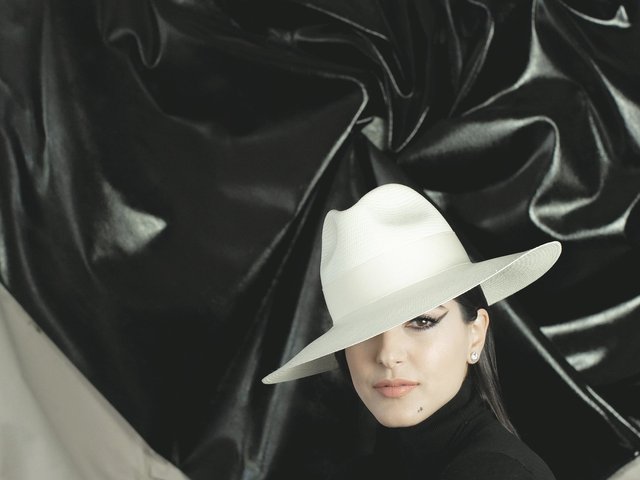Exit the Earlington Heights Metrorail station in Miami’s Brownsville neighbourhood and head to the lawn right at its entrance. There, you’ll find a cluster of sky-blue concrete stones, cradled by ferns, live oaks and other subtropical flora. Their colour was once weathered, the surrounding vegetation having left its muddy mark—but even before they were given a fresh coat of paint, the stones would briefly shine, almost incandescent, in the golden-hour light of sunset. Beverly Buchanan’s Blue Station Stones (1986) are meant, in part, to reference nearby Lincoln Memorial Park—a historic Black graveyard where figures like William Sawyer, one of Miami’s first Black physicians, and his daughter Gwen Cherry, the first Black woman to serve as a Florida state legislator, are buried.
The concrete blocks, which evoke tombstones, are melancholic but inviting, place markers that also offer places to sit and remember. It can be easy to miss them, not for their imperceptibility but rather their camouflage; the stones have not been overtaken by the foliage but instead seem to have sprung from it. For Natalia Zuluaga, the co-director of Name Publications and the recently announced chief curator at the Patricia & Phillip Frost Art Museum at Florida International University, Blue Station Stones reminds her of how the city is designed so that we might miss—and eventually find—its true touchstones.

Natalia Zuluaga is the chief curator at the Patricia & Phillip Frost Art Museum at Florida International University Courtesy of Natalia Zuluaga
The Art Newspaper: Do you remember the first time you encountered Blue Station Stones?
Natalia Zuluaga: I don’t. I think this is part of the reason why this work keeps coming back to me. I think of it more as a reminder of everything that I’ve missed, of everything that we don’t see. And it’s not because it’s not visible. It’s because the way we navigate this city doesn’t always activate our vision.
By the time I saw Blue Station Stones, I think my eyes were better trained to look at our urban environment for things like this. I remember that they struck me as graves, worn-out seats, forgotten pieces of concrete or something not yet built. I came to the US when I was very young, so the sculptures vaguely reminded me of playing in Colombia, where construction debris could just as easily serve as playground equipment. I don’t think my first impression was that off. They are stones, shaped like seats and cubes, originally dyed cobalt blue, directly placed on the ground with green foliage surrounding them. Over the years they’ve been a few different shades of blue, and even that has given me pause. When they faded, was it because of a fog of forgetting that echoes the way the needs of working-class communities can go unseen or unheard? When they were bright blue, like they are again now, was it from overzealous restoration? Were either of these Buchanan’s intentions?
For me, Blue Station Stones recalls both a place to meet and a place to remember. What about this piece is special to you?
The sculpture is monumental in its simplicity. It achieves a level of poetic resonance that historical discourse wants to attribute to big, corroded sheets of iron and that, instead, are found here in a Metrorail station in a working-class—and rapidly changing—neighbourhood in Miami. It’s not located in Bayfront Park or in a federal building or commissioned for a new development. Here, something else makes it something to be revered, whether that something is the everyday experience of it or the fact it lies on a trajectory of work Buchanan left behind that evinces racial inequality or points to the sites and structures of injustice. The fact that it slowly seeped into my understanding of the city until it took root speaks to that. The city has grown and changed around this sculpture; that has its haunting effect, too.

The concrete stones, created in 1986, had faded and weathered and were recently repainted Liliana Mora
How does Blue Station Stones reflect the changing city?
When you asked me to do this interview, the first thing that came to mind was my friendship with the artist Domingo Flores Castillo. We met in 2004 at Florida International University, and we’d talk a lot about the city, our experience of it; those conversations evolved as the city changed. All of this centred around the idea that this city was constantly being carved up to aspire to some preconceived image—whether an architectural rendering of a future building or a postcard photo. We were constantly trying to reconcile the difference between image and lived experience.
Now, I feel like time has caught up. We’re navigating through those built renderings, and the same people those images omitted then are still absent from the real spaces today. It’s no coincidence that I think of the endurance of this work. I think of its concreteness, of its ruin-like edges, as both historical and oddly futuristic. Buchanan gives us the site and the space to look both back and forward.
• Blue Station Stones, near Earlington Heights Metrorail station, 2100 NW 41st Street, Miami






